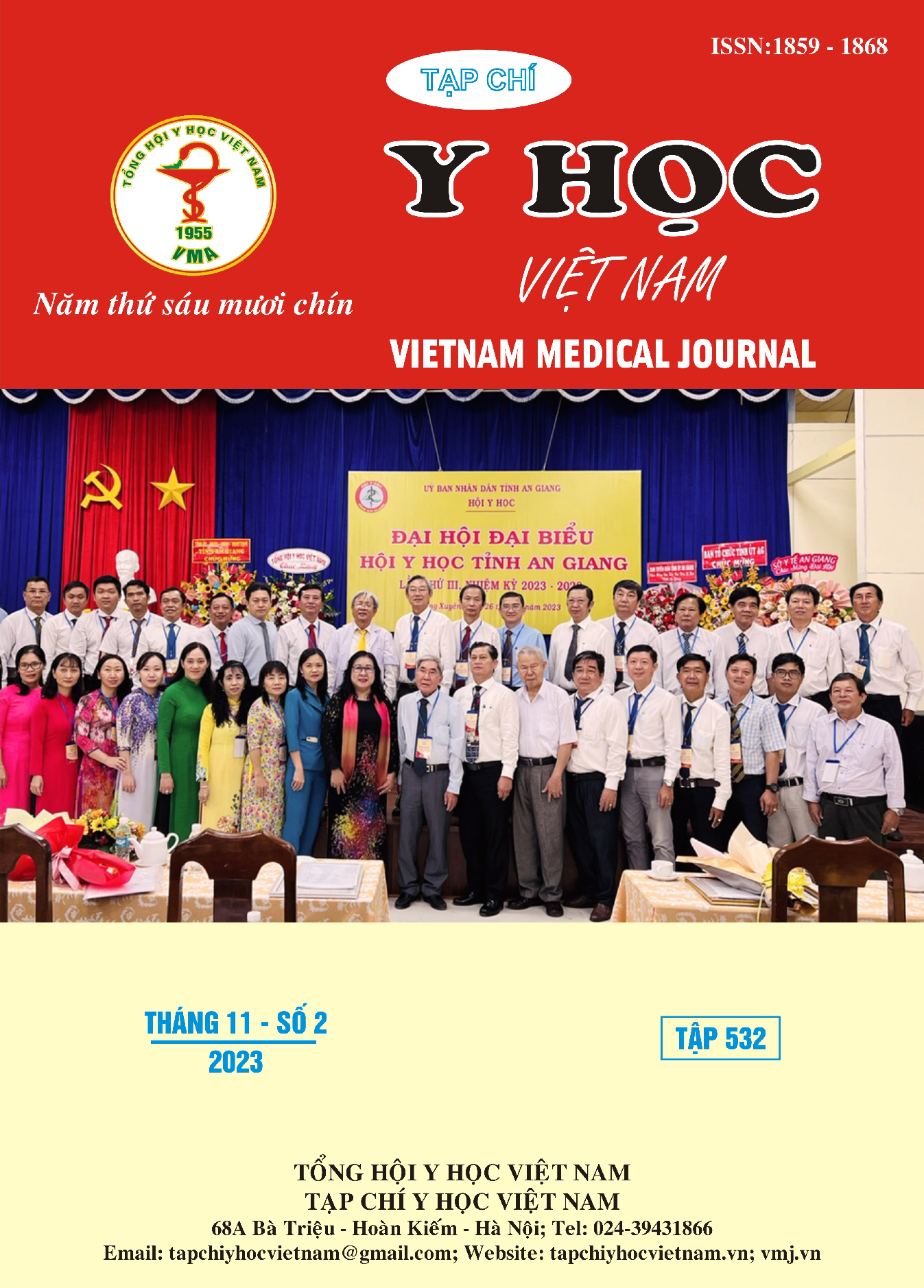BIẾN CHỨNG TỔN THƯƠNG MẠCH MÁU SAU TÁN SỎI THẬN QUA DA ĐƯỜNG HẦM NHỎ DƯỚI HƯỚNG DẪN SIÊU ÂM
Nội dung chính của bài viết
Tóm tắt
Đặt vấn đề: Chảy máu trong và sau tán sỏi thận qua da đường hầm nhỏ dưới hướng dẫn siêu âm là biến chứng ít gặp, nhưng có nguy cơ đe doạ tính mạng. Chúng tôi tiến hành nghiên cứu nhằm đánh giá tổn thương mạch máu sau tán sỏi qua da đường hầm nhỏ và phương pháp kiểm soát những biến chứng này. Đối tượng và phương pháp: Nghiên cứu mô tả. Hồi cứu 1530 trường hợp được tán sỏi thận qua da đường hầm nhỏ dưới hướng dẫn siêu âm tại Bệnh viện Việt Đức từ tháng 1/2018 đến tháng 12/2019. Bệnh nhân (BN) gây tê tủy sống, tư thế nằm nghiêng, chọc dò và tạo đường hầm qua da dưới hướng dẫn siêu âm với nong Amplatz 18 Fr, sử dụng ống soi niệu quản bán cứng tán sỏi thận bằng Holmium laser 80W. Đánh giá biến chứng chảy máu trong và sau phẫu thuật. Kết quả: Tỉ lệ chảy máu trong và sau mổ là 3,7% (57 bệnh nhân). 12 trường hợp có ổ giả phình được nút mạch chọn lọc trong đó 4 bệnh nhân giãn đài bể thận độ I, 8 bệnh nhân giãn độ II. Về phân loại sỏi S0, S4 không gặp trường hợp nào, sỏi S1, S2, S3, S5 lần lượt gặp ở 4, 5, 1, và 2 bệnh nhân. 7 bệnh nhân có một đường hầm và 5 bệnh nhân có 2 đường hầm với 12 đường hầm vào đài giữa, 4 đường hầm đài dưới và một đường hầm đài trên. Có 7 BN tán sỏi 1 lần, 4 BN tán sỏi 2 lần và 1 BN tán sỏi 3 lần. Thời gian mổ trung bình là 69,5 ± 27,2 phút (35 - 120). Bệnh nhân chảy máu sau mổ tán sỏi thận qua da đường hầm nhỏ cần can thiệp mạch chiếm 0,78%, sau can thiệp mạch một lần duy nhất bệnh nhân ổn định. Kết luận: Chảy máu sau tán sỏi thận qua da đường hầm nhỏ dưới hướng dẫn siêu âm có tỉ lệ thấp, nút mạch chọn lọc là phương pháp an toàn, hiệu quả cao, giúp bảo tồn chức năng thận
Chi tiết bài viết
Từ khóa
Sỏi thận, sỏi san hô, tán sỏi thận qua da qua đường hầm nhỏ, điều trị ít xâm lấn, đái máu, can thiệp mạch, thuyên tắc, xuất huyết thận
Tài liệu tham khảo
2. Knoll T, Wezel F, Michel MS, Honeck P, Wendt-Nordahl G. Do patients benefit from miniaturized tubeless percutaneous nephrolithotomy? A comparative prospective study. J Endourol. 2010;24 (6):1075 - 1079.
3. Kervancioglu S, Gelebek Yilmaz F, Erturhan
S. Endovascular management of vascular complications after percutaneous nephrolithotomy. Vasa. 2014 Nov;43(6):459-64.
4. Du N, Ma JQ, Luo JJ, Liu QX, Zhang ZH, Yang MJ, Yu TZ, Tao Y, Liu R, Zhang W, Yan ZP. The Efficacy and Safety of Transcatheter Arterial Embolization to Treat Renal Hemorrhage after Percutaneous Nephrolithotomy. Biomed Res Int. 2019 Apr 22;2019:6265183.
5. Venkateswarlu J, Kumar MS, Babu RP, Abkari A. Endovascular management of iatrogenic renal vascular injuries complicating percutaneous nephrolithotomy: Role of renal angiography and embolization; an analysis of 159 cases. Indian J Radiol Imaging. 2017 Jul- Sep;27(3):293-297.


